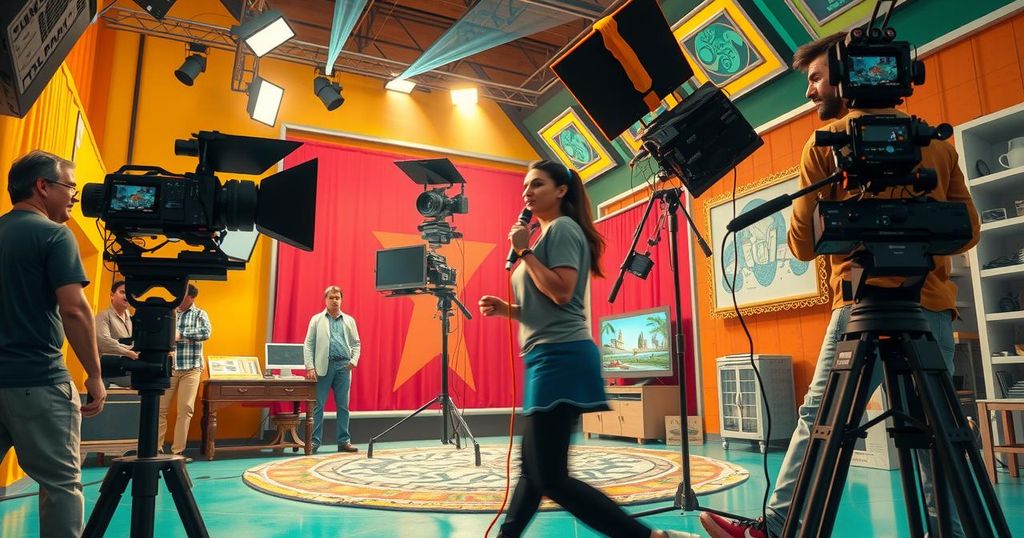AI-Driven Innovations Set to Transform Bollywood Filmmaking and Production Costs
Ajay Devgn’s Prismix heralds a new era of AI in Bollywood, promising cost reductions and efficient production. Industry experts highlight the balance between AI’s capabilities and the irreplaceable human creativity essential for storytelling. Innovations include AI in scriptwriting, visual effects, and marketing, enhancing overall filmmaking processes while anticipating future advancements in local language productions.
In a transformative leap, Ajay Devgn has unveiled Prismix, an AI-driven media company poised to revolutionize Bollywood’s filmmaking processes. With increasing reliance on generative AI for scripting, post-production, and marketing, production costs are expected to drop significantly. However, industry professionals underscore that while AI facilitates efficiency, human creativity remains essential for true cinematic artistry.
Leading the charge, Dipankar Mukherjee of StudioBlo notes that AI’s role in pre-production could reshape budgets by eliminating the necessity for foreign shoots, significantly enhancing design authenticity in period dramas. Mukherjee shared an example of their AI-generated visual work for Ayushmann Khurrana’s music video, showcasing the innovative potential of this technology.
According to Harikrishnan Pillai from TheSmallBigIdea, AI is a game-changer in storyboarding, providing rapid script writing and visual concept generation crucial for detail-oriented directors. He emphasizes that AI streamlines the referencing process, enhancing scripts’ depth while also improving visual effects, although challenges remain in achieving realistic hand movements and intricate gestures.
In marketing, AI generates captivating content, evidenced by AI-created posters for the film Merry Christmas featuring stars Katrina Kaif and Vijay Sethupathi. AI’s prowess extends to pre-production tools like ScriptBook, which enhance scripts and predict audience reactions, according to Viren Vesuwala from White Rivers Media.
During production, AI accelerates processes such as visual effects and editing, with technologies like Disney’s FaceDirector seamlessly integrating performances. Industry insiders, like Siddharth Kumar Tewary from Swastik Productions, highlight that AI is not a distant future but a present catalyst for innovation, promising personalized viewer experiences.
Manish Kumar from Videos4Businesses identifies cost reduction through AI’s optimization of resources and production timelines as a significant benefit. Streamlining pre and post-production activities, including automated editing and VFX enhancements, will enable studios to maximize savings while preserving quality.
Producer Vipul Shah acknowledges that AI presently assists in research and visual effects, hinting at a future where technology might facilitate local language films without traditional dubbing. Generative AI, although still in its infancy, holds immense potential for creative enhancement and cost optimization, paving the way for more efficient market delivery.
As Bollywood embraces AI-driven innovations through companies like Prismix, the future points to cost-effective filmmaking paired with enhanced creative processes. Yet, the importance of human ingenuity in storytelling cannot be overlooked, as AI still requires human oversight for meaningful content creation. The landscape is shifting, and while AI augments creativity, it is the fusion of technology and human touch that will ultimately enrich the cinematic experience.
Original Source: www.livemint.com




Post Comment